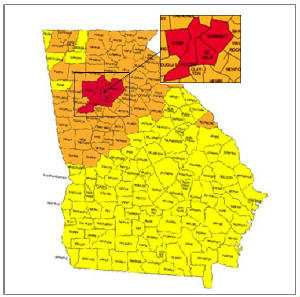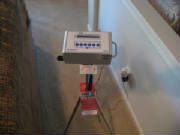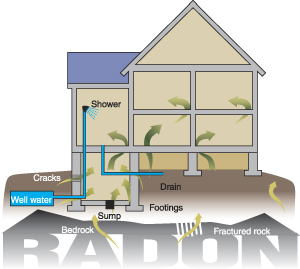
|
Atlanta Radon Testing
What
is radon?
How can radon affect people's health? Radon gas is a toxic gas that seeps into homes through the foundations. And it doesn't
matter if your home is built on a basement, crawlspace or a slab, this deadly gas can seep in and it doesn't matter if it's
brand new construction or a 50 year old home. The good news is that Radon Gas can be detected with a simple test and if the home you're purchasing has elevated levels of Radon Gas, it can be easily fixed.The key to the issue is Getting A Radon Test. Then you know if the problem exists and if so, to what degree. Please know that I personally would not live in a home in Georgia that had not been tested for Radon Gas! Atlanta is located in the EPA's Highest Radon Zones - Zone 1. Not many people, including most Real Estate Professionals, are aware of this issue. 
How do I know if there is radon in my home? You cannot see, feel, smell, or taste radon. Testing your home is the only way to know if
you and your family are at risk from radon. The EPA and the Surgeon General recommend testing for radon in all rooms below
the third floor. Radon testing is inexpensive and easy--it should only take a few minutes of your time. Millions of Americans have already tested their homes for radon.
 What can I do to protect myself and my family from radon?
Contact us today to have
your home tested for Elevated Radon Gas 404-663-5955 - For more information, read the EPA's A Citizen's Guide to Radon and How to Find a Qualified Radon Service Professional in Your Area The above information is provided as a public service by the Environmental Protection Agency for educational purposes. |



